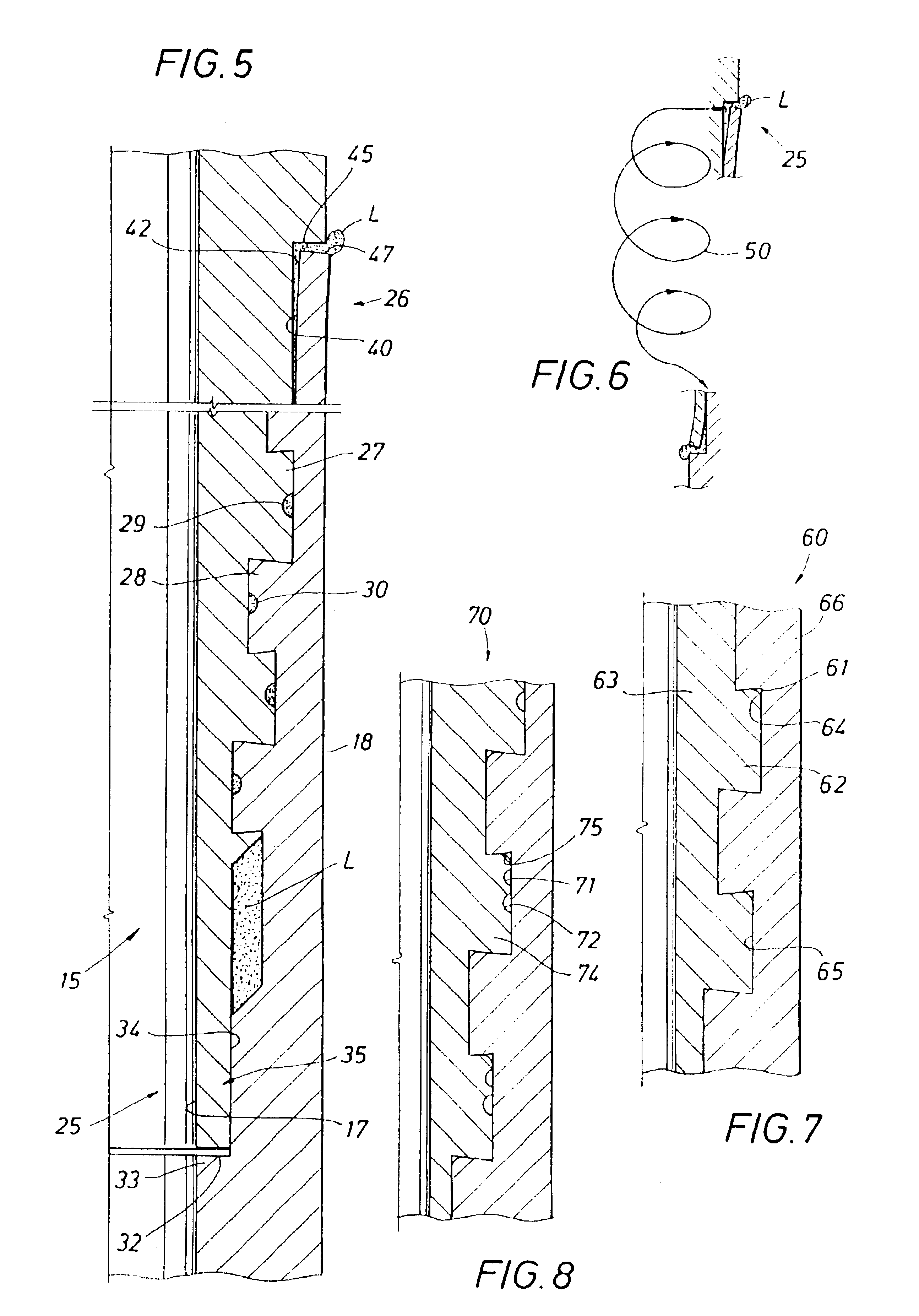Pressure relieved thread connection
a thread connection and pressure relief technology, applied in the direction of hose connection, screw threaded joint, mechanical apparatus, etc., can solve the problems of high hydraulic force, damage to the threaded connection, so as to prevent the generation of damaging hydraulic force, prevent the ingress of external corrosive fluid, and preserve the sealing effect of seals
- Summary
- Abstract
- Description
- Claims
- Application Information
AI Technical Summary
Benefits of technology
Problems solved by technology
Method used
Image
Examples
Embodiment Construction
[0076]A conductor pipe string of the present invention is indicated generally at 10 in FIG. 1. The top end of the pipe string 10 is engaged by a hammer H that is being operated above the surface S of a body of water W. A mud line ML is at the interface between the earth E and the water body W. The string 10 is driven into the earth in reaction to repeated impact blows delivered by abrupt reciprocating movement of the hammer H.
[0077]The conductor pipe string 10 is constructed from the assembly of a number of conductor pipe sections such as the sections 11 and 12 connected together at their ends 13 to make a string of pipe that extends below the mud line ML to a desired subsurface point P. The point P may be the design depth for the well construction or may be the point of refusal at which the pipe can no longer be driven into the earth. As thus far described, the conductor pipe and installation process are conventional.
[0078]FIG. 2 of the drawings illustrates a form of a threaded con...
PUM
 Login to View More
Login to View More Abstract
Description
Claims
Application Information
 Login to View More
Login to View More - R&D
- Intellectual Property
- Life Sciences
- Materials
- Tech Scout
- Unparalleled Data Quality
- Higher Quality Content
- 60% Fewer Hallucinations
Browse by: Latest US Patents, China's latest patents, Technical Efficacy Thesaurus, Application Domain, Technology Topic, Popular Technical Reports.
© 2025 PatSnap. All rights reserved.Legal|Privacy policy|Modern Slavery Act Transparency Statement|Sitemap|About US| Contact US: help@patsnap.com



